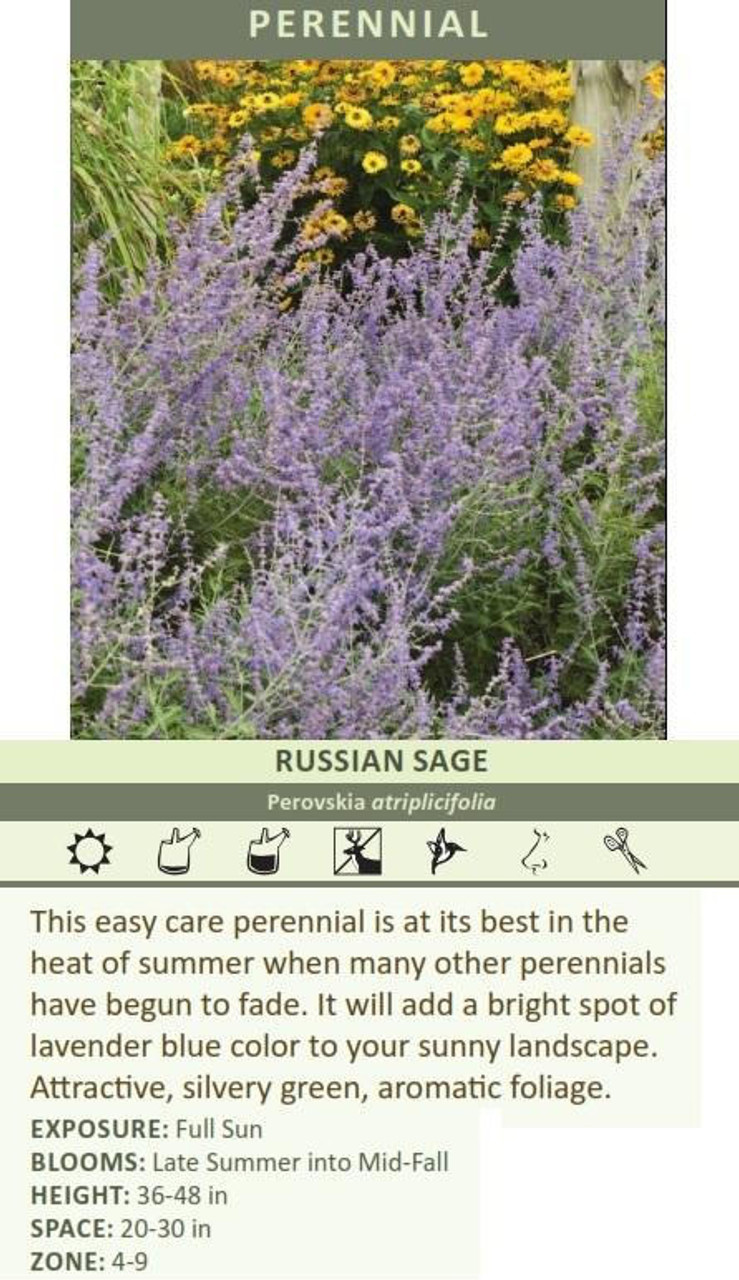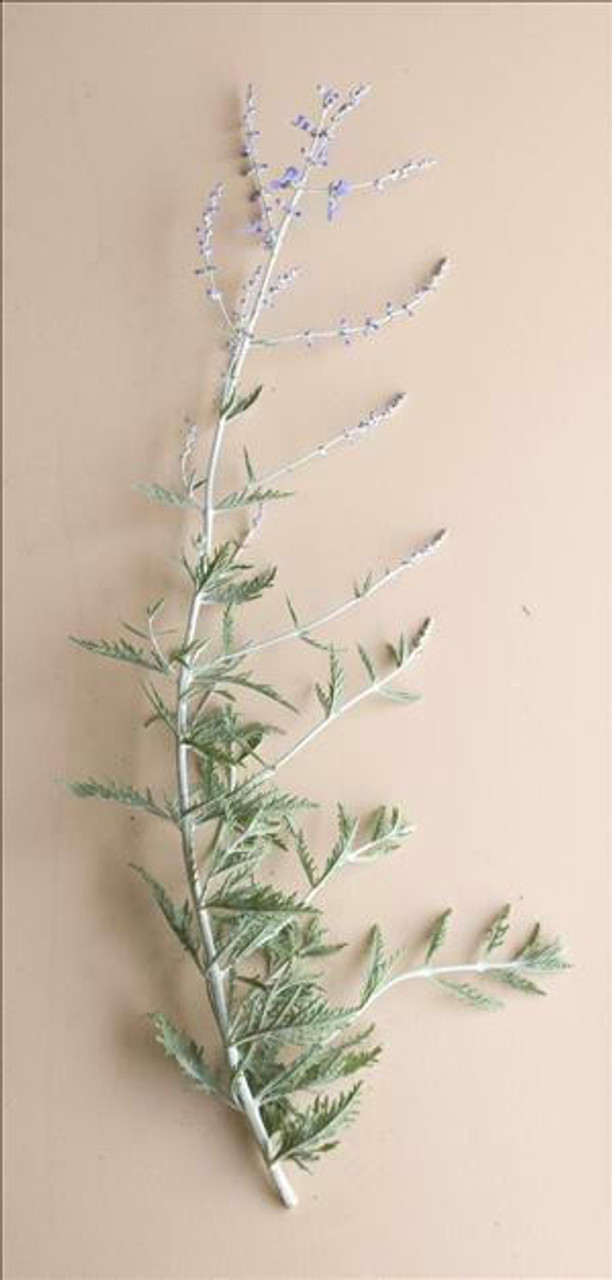Product Description
Perovskia atriplicifolia (4) 1-gallons
Family: Lamiaceae/Labiatae (mint Family); Common name: Russian Sage.
Zone 4 to 9.
Full sun. The plant for hot, dry locations.
Plants reach 3 to 4+ feet tall and 2 to 3+ feet wide,
classified as a deciduous subshrub or woody perennial.
Growth rate: Moderate, Easy to grow.
Airy spikes of lavender-blue, tubular flowers top strong stems with small, finely dissected, silvery-green leaves provide two or three months of flowers in late summer and autumn. Its loose, open habit makes this perennial an effective filler in the back of the border.
1995 Perennial Plant Association Plant of the Year!
Perovskia atriplicifolia, commonly known as Russian Sage, is a popular perennial subshrub that is beloved for its airy, cloud-like appearance and long-lasting lavender-blue flowers. It is a fantastic addition to any sunny garden, offering a touch of elegance and attracting pollinators. Here is a breakdown of its key features and growing conditions:
- Wispy Blue Flowers: Perovskia atriplicifolia produces tall, slender stems adorned with whorls of small, lavender-blue flowers. These flowers bloom in profusion from mid-summer to early fall, creating a hazy, cloud-like effect in the garden.
- Aromatic Foliage: The gray-green leaves are finely dissected and aromatic when crushed, releasing a pleasant, sage-like fragrance. The foliage adds a beautiful texture to the garden and contrasts nicely with the delicate flowers.
- Upright Habit: This plant typically grows in an upright, bushy habit, reaching 3-5 feet tall and 2-4 feet wide. It adds a vertical element to garden borders and provides a lovely backdrop for other plants.
- Adaptable and Hardy: Russian Sage is known for its adaptability and hardiness. It thrives in a wide range of conditions, including poor soils, drought, and heat. It is hardy in USDA zones 5-9.
- Low Maintenance: This plant is relatively low-maintenance and does not require deadheading or frequent watering once established.
- Attracts Pollinators: The flowers attract a variety of pollinators, including bees, butterflies, and hummingbirds, making it a valuable addition to any wildlife garden.
Growing Conditions:
- Sunlight: Plant in full sun (at least 6-8 hours per day) for optimal flowering.
- Soil: Prefers well-drained soil but tolerates a variety of soil types, including sandy, loamy, and clay soils.
- Water: Water regularly during the first growing season to establish a strong root system. Once established, it is very drought-tolerant.
- Maintenance: Cut back the plant to about 6-12 inches tall in late winter or early spring before new growth emerges. This will encourage bushier growth and prevent the plant from becoming too leggy.
Design Ideas:
- Borders: Plant in groups or drifts to create a stunning border of color and texture.
- Mass Plantings: Create a dramatic effect by planting Russian Sage en masse.
- Containers: Its manageable size makes it suitable for container gardening, adding a vertical accent to patios and decks.
- Meadow Gardens: Combine with other drought-tolerant perennials and grasses for a naturalized look.
- Cut Flowers: The long-lasting blooms make excellent cut flowers for fresh or dried arrangements.
(4) 1-gallon containers ready to plant, plants may be trimmed for shipping,
Other Details
The most important part of the plant is its root system. Healthy roots are the foundation of a healthy, vibrant plant. The type of plug container used is based on the specific needs of the plants. Perennials offered as bare root traditionally perform better when planted as bare root.Planted in a specialized mix, potted plants have well established root systems. Top growth stage will vary depending on the current life cycle and time of year when shipped. In Winter and early Spring dormant plants may be shipped. Dormant plants may be planted right away, even before the last frost date.
Most bare root varieties are field grown for at least one season, though Hemerocallis and Hosta are grown for two seasons. The bulk of the soil is removed during the harvesting process and the tops of most varieties are trimmed back to the crown. They are graded, packed in shredded aspen or sphagnum moss and stored in freezers until ready to be shipped.
See our Container Sizes and Bare Root Perennials pages for more information.
Plant information and care is provided in the Overview section, Plant Genus Page and general information is provided in the Planting Care & Guides. Additional questions can be asked on each Plant page.
Plant Spacing: Using the maximum mature spread or width of a plant to guide spacing, ensures space to grow to full size. To fill an area sooner, plant them closer together. Just remember, future thinning or transplanting may be needed.
Water: Keep a close eye on newly planted perennials, especially throughout the first growing year. Most early plant loss is due to too much or too little water!














